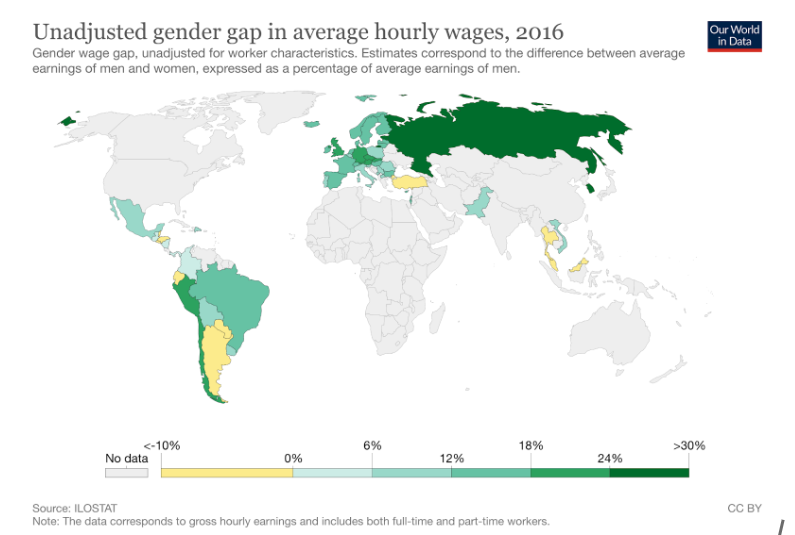Introduction into Feminist Economics
-
Overview6 Topics
-
Background information13 Topics
-
Introduction
-
Definition of feminist economics
-
Origins of feminist economics and important thought-leaders
-
Critiques: Neoclassical vs feminist paradigm
-
Principles of feminist economics
-
5 - Gender-based economic inequalities in data
-
1.The gender pay gap has decreased in the last couple of decades in most countries.
-
2. Women are often underrepresented in senior positions in firms.
-
3. Women are often overrepresented in low-paying jobs
-
4. In many countries, women are less likely to own land and control productive assets.
-
5. Women have often limited control over household resources.
-
6. Gender-equal inheritance systems are not adopted in all countries.
-
Conclusion
-
Introduction
-
Endnotes
-
References
-
Glossary
-
Interactive learningDeepen your knowledge4 Quizzes
-
Training materialExercises for group activities2 Topics
1.The gender pay gap has decreased in the last couple of decades in most countries.
The gender pay gap still persists, however it decreases year by year. When comparing the statistics over the past five years, the gender pay gap reduced across the European Union. The Eurostat data for 2019 show that the average gender pay gap in EU-27 amounts to 14.1% which shows the difference between average hourly earnings between men and women. The highest difference is in Estonia (21.7%), the lowest difference is in Luxemburg (1.3%).

When looking at the gender pay gap globally, the data of ILOSTAT (2016) show that the highest gap was in South Korea, Estonia, Russia, Germany, Austria, Czechia, United Kingdom, Peru and Chile. A negative difference was in Thailand, Honduras, Belize, Malaysia, Turkey, Ecuador, Argentina or Paraguay.

The gender pay gap also changes during life and it increases with age. The data show that it tends to increase when women have children.
The important question here is how to reduce the gender pay gap. There are many strategies which proved to be efficient to help closing the gender pay gap.
- Improving women’s level of education has a positive impact on reducing the gender pay gap.
- Changes in public policy and management practices towards family-friendly labour market policies have a positive impact on reducing gender pay gap, e.g. maternity leave coverage or flexible working time arrangements help in women’s retention in jobs.
- Early education and childcare help women to return earlier to work, reduces unpaid care work and reduces gender pay gap.
- Changes in social norms and culture stereotypes can positively impact equality in opportunities of men and women and help to reduce gender pay gap.
13 – Ortiz-Ospina Esteban, Max Roser (2018). Economic inequality by gender. Available at: https://ourworldindata.org/economic-inequality-by-gender, 14 – EUROSTAT (2019). Gender pay gap statistics. Available at: https://ec.europa.eu/eurostat/statistics-explained/index.php?title=Gender_pay_gap_statistics, 15 –ILOSTAT (2016). Available at: http://www.ilo.org/ilostat/faces/oracle/webcenter/portalapp/pagehierarchy/Page30.jspx






